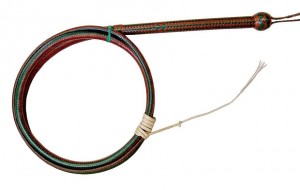Successfully Breaking Up
Tuesday, May 25th, 2010I also posted this at another blog that I write for, but I think it’s pretty widely applicable so I’m posting it here, too. Of course, BDSM relationships tend to have their own break-up complications, but this is mostly about how to deal with the emotional aspects of a breakup, not the social aspects.
Breakups are inevitable. That’s not to say that all relationships are doomed to end, but it is nearly impossible to go through life without ever having to end a relationship. And in having more than one romantic relationship at a time, generally poly folks have to deal with breakups more than monogamous people. So I’d like to talk a little about some good and bad coping strategies to use when ending a relationship.
 The following is information I’ve gleaned from my own break-ups, and those I’ve observed. So it comes from my experiences, those of others, and my knowledge of psychology and people in general.
The following is information I’ve gleaned from my own break-ups, and those I’ve observed. So it comes from my experiences, those of others, and my knowledge of psychology and people in general.
In my experience, break-ups are formulaic in two ways: there’s a formula for doing it in a way with the least amount of overall pain, and there’s a formula for how people naturally want to do it. And in my experience, these two things are mutually exclusive.
When breaking up, do:
- Make sure that you’ve talked it out first, and gotten closure. Sometimes both parties aren’t going to want the break-up; if you’re on the side that wants to stay together, keep in mind that if the other person isn’t invested, then it just won’t work no matter how much you want it to. You can’t force it.
- Be steadfast. After having talked it out, if the decision was made that breaking up is what needs to be done, keep to that. Sometimes it’s going to feel like you made the wrong decision; accept that you will feel this way, and don’t let it sway you.
- Have a support system. Rely on your friends. Have someone you can go to, to tell them what you’re going through. Preferably, someone who has been there themselves, and can warn you away from the pitfalls.
- Accept the pain. It will be there even if you do things perfectly, and it is part of the process.
With that said, here are some things that people do that interferes with the break-up process.
 When breaking up, do not…:
When breaking up, do not…:
- …avoid the pain. This is closely related to #4 in the “do” section, but merits its own mention. That’s because this is what your natural instinct will be (we feel pain, we want to avoid it), but don’t follow that impulse. That pain is not only unavoidable, but necessary in order to let go of the relationship. It’s fine to distract yourself from time to time, to take the pain in smaller chunks, but don’t let that turn into avoidance. There is a difference between coping with the pain, and trying to take a shortcut past it. The latter never works out well, and only ends in more pain in the end.
- …break up during the heat of emotion, like during/after an argument. Arguments happen, feelings get hurt, even in the most healthy of relationships. The decision to break up needs to be made with a clear mind.
- …go immediately from being lovers to being friends. I cannot emphasize how important this is. Especially if one party involved hasn’t fully let go of the relationship, don’t try to go directly from lovers to friends. It’s impossible to make that transition successfully without having a period of no contact. That means none — block them on Facebook, don’t go to an event that you know they’ll be at, no contact at all. I’ve seen many cases where people think that they are open/honest enough, enlightened enough, whatever enough that they can skip this no-contact period. And I have yet to see a single instance of that leading to anything other than more pain.
- …have break-up sex. This leads to the yo-yo cycle of breaking up and getting back together again. If you must have break-up sex, let it be with someone other than who you’re breaking up with. Sometimes fucking someone else is the best way to get the taste of someone out of your mouth (pun intended). Though beware #5 below.
- …get into a serious rebound relationship. Rebounds are fine, in my opinion, and can even be healthy, as long as everyone recognizes it for what it is. That’s also not to say that a rebound relationship can’t ever develop into a “real” longterm relationship; but in my experience, that’s rare.
Dealing with a breakup generally involves going through the five stages of grief in the Kübler-Ross model: denial, anger, bargaining, depression, and acceptance. The stages don’t always come in that order, mind you, and we can revisit previous stages. For example, you might be intensely angry at the other person until it wears you down into depression, but then at some point later when you’re not as emotionally fatigued, you could feel the anger again. And sometimes, some people don’twant to let go of the pain and the anger — that’s all that’s left of the relationship, and they feel compelled to cling to it in any way that they can, even if unhealthy.
And on that note, the road to healing is not a smooth one. It is filled with peaks and valleys — maybe one day you’ll feel fine and completely over it, convinced that you’re fine and will be fine going forward… and the next day you’ll cry and just want to be in their arms again with everything as it used to be. It sucks, but that’s how it goes.
But there is a light at the end of the tunnel — you will heal eventually. I hope that the above advice helps people get to that light more quickly. Do you have any tips or advice that I didn’t cover? Leave them in the comments!



